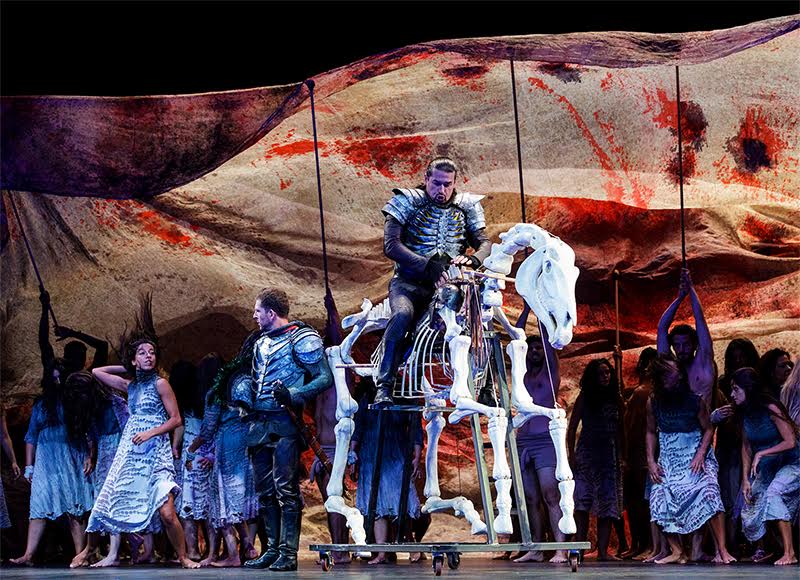Verdi’s Macbeth was the first opera to be performed at the first international festival in 1947 and this year, the festival’s resident company Teatro Regio of Turin present this major new production. The audience is immediately gripped by the opening scene with the witches and become aware of the visual feast that is to follow over the next three hours.
Shakespeare’s three witches have turned into at least 30 as they dominate the stage, all wearing the same type of smock dress with long hair which they frequently throw forward to cover their faces. They are certainly presented as creatures from some other world, but it’s not only because of their costumes, but also their movements – they are adept dancers as well as singers – as they jerk and jump around like lunatics. The stage management is magnificent throughout this production, keeping the audience mesmerized throughout. What will happen next? There’s nothing predictable here. Macbeth arrives on stage for the first time on the skeleton of a horse, presumably to symbolize his impending doom but there is something of the comic in this which jars with the tragedy. Yes, there are comic moments in Shakespeare’s play – no sign of the Porter here – but this doesn’t feel like the darkest of nights at opera, as advertised in the EIF programme.
Duncan’s entrance stuns the audience with his circus entourage and yes, strangely, more humour in the form of clown-like dancers. The mood isn’t as it should be. But amongst the moments that don’t seem quite right, there is also incredible creativity and masterful staging.
The banquet scene, in which Macbeth and Lady Macbeth appear for the first time as King and Queen of Scotland, mirrors Duncan’s entrance. It includes the same circus antics but with the addition of pole-dancers to the back of the stage. Really? At a royal banquet? There is no table for the ghost of Banquo but gold chairs in ascending heights arranged cleverly. Macbeth climbs them, then releases what appears to be a rolled up red scarf which then becomes his train, followed by a sea of blood.
The production continues in the same vein: dancing beds around Lady Macbeth as she descends in to madness and huge cacti to represent Birnam Wood. The mood is established movingly when some members of the cast lie in grave-like formation as MacDuff visits the bodies of his recently murdered family. The time passes quickly and the production is never without a dull moment, but there are times when it perhaps goes too far and the drama of the moment is lost as a result.


Comments